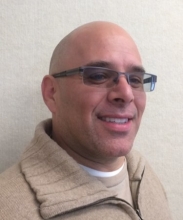MSE 298 Seminar (Zoom): Computational Materials Science, Applications at a National Laboratory

Staff Scientist
Materials Dynamics and Kinetics Group, Materials Science Division
Lawrence Livermore National Laboratory
Zoom: Meeting ID 928 7114 0676, Passcode 057979
Abstract: The development of computational models for the simulation and prediction of the structure, properties and behavior of heterogeneous materials is advancing our understanding of materials science and engineering at an increasing rate. In most cases, it requires the use of a variety of computational methods that span from an atomistic description of interactions to continuum numerical modeling. This is particularly true at a National Laboratory, where extensive research is performed with applications in future energy production, engineering innovations, materials strength and national security. In this presentation I will show examples of my research at LLNL that combine theoretical and computational modeling techniques in support of the laboratory’s mission, focusing on the modeling of nucleation and growth in simple melts via nonequilibrium molecular dynamics simulations that are used toward the construction of a kinetic model for dynamically driven liquid-solid phase transitions.
Bio: Luis Zepeda-Ruiz is a staff scientist in the Material Dynamics and Kinetics Group of Lawrence Livermore National Laboratory (LLNL). He earned his bachelor's degree in physics at Universidad Nacional Autónoma de México – UNAM (1994) and received a scholarship to pursue a graduate degree in the U.S. He received a master's degree (1996) and doctorate (2000) in chemical engineering from UC Santa Barbara where he worked on the study of strain effects in III-V semiconductor epitaxy. After his postdoctoral studies in materials sciences at Princeton University, he joined LLNL in 2002. Since then, he has performed research in a wide range of materials, including metals, ceramics, organic and inorganic crystals, and explosives, using first principles, molecular dynamics and Monte Carlo computational techniques. His current research focuses on the study of material properties, defects and interfaces during growth and evolution. He is actively involved in a variety of professional societies, planning and organizing conferences, symposia, various government panels and working groups. He has authored or co-authored 70-plus publications and technical reports and 90-plus invited and contributed talks.
Share
Upcoming Events
-
MSE Special Seminar: Decarbonizing Industries for a Climate-resilient Future - From Renewable Energy to Sustainable Material Recovery
-
MAE 298 SEMINAR: Technology Developments for FIR Bolometric Detector Focal Plane Assemblies
-
CBE 298 Seminar: The Wisdom of the Crowd: Watching Bacterial Collectives (Re)shape Themselves
-
CEE Seminar: BIM and the Digital Twin
-
MSE Special Seminar: Revolutionizing Battery Technology - Engineering Quantum Materials for Enhanced Safety and Performance in Solid Electrolytes
